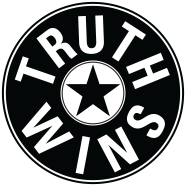Inside Out: Looking Inside Disgust
By Michaela Nasello
Pixar and Disney are at it again. With their tear-jerking, life-pondering, hilarious movie-making, who can go wrong in selecting any of their film collaborations on movie night? Their newest adventure, Inside out, proves just as well received as its predecessors, holding a key trait in common: a unique approach to encountering life.
This time around, we get a creative composition of everyday brain functions as we as literally as possible get inside the characters’ heads.
(And on a Personal note, hiring the oh-so talented Amy Poehler was one of the best choices Pixar and Disney have ever made!)
I don’t know exactly what inspired this flick, but in my imagination, creators must have looked at our feelings-obsessed society and said something along the lines of, What our culture needs now, perhaps more than ever, is an in-depth look into the functions of human emotion. Let’s create something that encourages fans to embrace their natural emotions—all of them—even the ones that initially don’t make us feel so good. For that reason alone, Inside Out is overflowing with wisdom. This movie is thought-provoking, hopeful, whimsical, and very well made.
Aside from listing all the wonderful aspects of the film, let’s go back to that first one I mentioned: thought-provoking. My brain was going about 50 miles a minute the entire time I sat in the theater, and one element that I still can’t stop pondering is the character of Disgust. Of all the emotions accounted for in young Riley’s brain (Fear, Sadness, Joy, and Anger), the inclusion of Disgust almost seems unfitting. Even with her strong presence, I experienced difficulty in placing her among the rest.
Although a very real and common human experience, I don’t know that disgust is even an emotion. If that is so, what is she trying to be? When I reflect on times I have become disgusted by a certain person or set of circumstances, I have a hard time pinpointing the specific emotion behind the reaction. That said, perhaps she represents a collection of emotions too complex to articulate in a film designed for children, who tend to grasp concepts best when put in simplified form.
If this is true, let’s go through and pull out different emotions from this character. I see three emotions that make up Disgust, and an interesting tie-in to a couple of others.
What I first noticed about Disgust is her green color. As the other characters’ color choices make sense (for example, the color, red, often symbolizes passion or rage, and therefore fits Anger well), Disgust’s color choice is highly suggestive of jealousy. Envy. A covetous nature. An overpowering desire to possess something (an item, a quality, an ability, etc.) that belongs to another individual. However, aside from the symbolic suggestion of the color, we don’t see much of this envious personality in Disgust. I would still argue, though, that creators intended audiences to relate the character to this emotion, so we will assume jealousy is one of her foundational elements.
Next, let’s explore the emotion of shame. Before I watched the film, the intriguing trailers left me stumped as to Disgust’s role based on her name alone. While the first physical attribute I noticed was her color, her name suggested to me that she is the one triggering Riley’s occasional tendencies to blame herself for things that go wrong, be overly hard on herself for mistakes she has made, and struggle with icky feelings of regret. It is possible that disgust can be described as an inward phenomenon as well as outward. In other words, in addition to feeling disgust toward others and uncontrollable circumstances, Riley deals with disgust toward herself, and this is what I mean by shame. Again, we don’t see much of these tendencies in the film, but Riley is human, so we know they are there.
And let’s not overlook Disgust’s frequent expressions of being annoyed. Clearly, this character also represents Riley’s obnoxiousness trigger. We can label this emotion as offense, or becoming offended. It’s that whole Oh my gosh, I canNOT believe they just said that about me! thing. Whenever Riley faces a situation that threatens her security in some way, Disgust takes her cue. For example, in the hostile moments of conversation between Riley and her parents, Disgust helps Riley to defend herself against accusatory comments.
IN!What is most interesting about these scenes is what happens next. Anger takes his cue as the offense builds. Her parents question her, Riley mistakes this for danger, and we see Anger triggering her to the point of blowing up and fleeing the dinner table to hide in her room. In addition, these feelings of offense branch from deep fears, as I earlier mentioned situations that threaten Riley’s security. The danger she senses triggers Fear, a character who is always trying to keep Riley safe from harm.
I wonder if Disgust could even function without Fear and Anger by her side. I highly doubt it. She seems to be fueled by jealousy, shame, and offense. She is sassy and ready to attack. In my mind, there’s no way Disgust is one specific emotion. She’s almost as complex as a human being, which is a fascinating choice on the creators’ part. I’ll likely be forever intrigued. Maybe I should just take another trip to the theater to figure it out.
 Truth Wins
Truth Wins